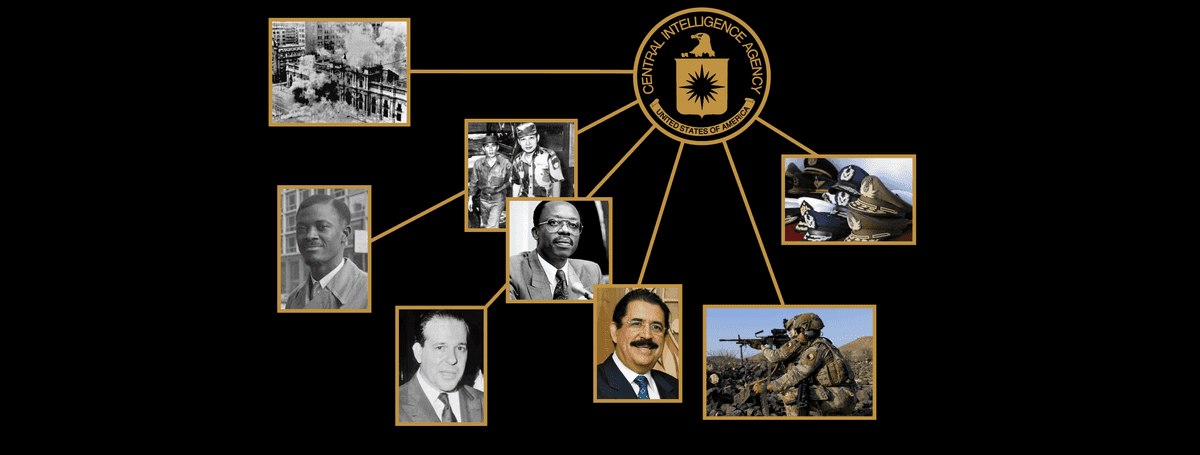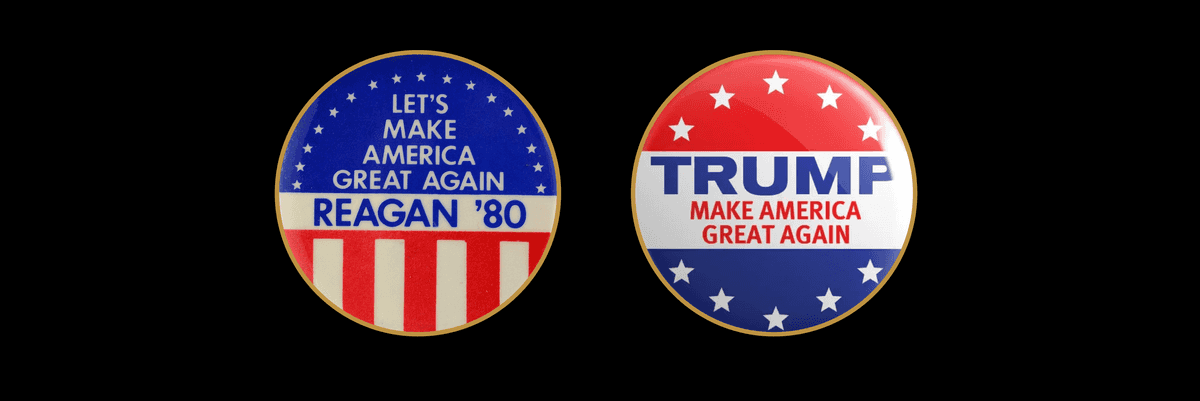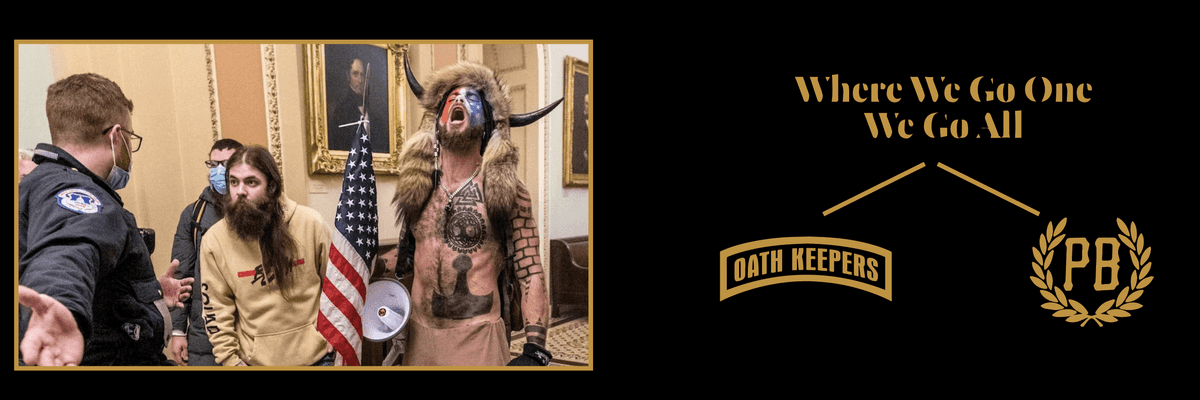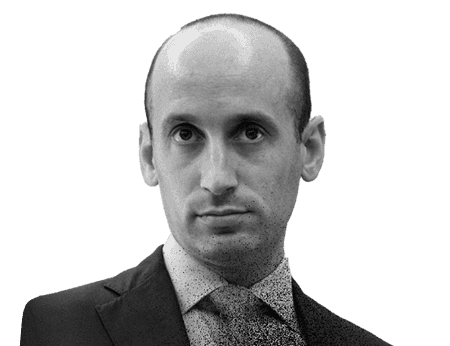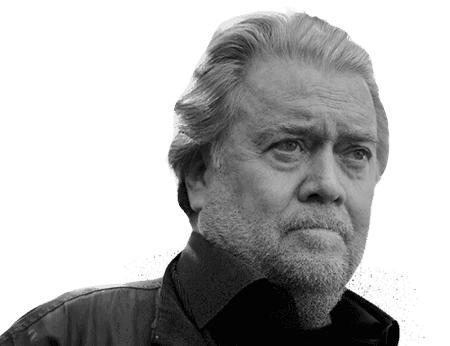A Ragtag Crew of Insurrections
On January 6th, 2021, 2,000 of former US President Donald Trump’s supporters did the unprecedented: for six hours, they stopped the peaceful transfer of the presidency.
Incited by Trump, a small group of rioters arrived carrying semi-automatic guns.1 As their numbers expanded to hundreds, they beat back Capitol security and smashed windows to gain entry to the building. Waving a medley of American, Confederate,2 and Christian nationalist flags,3 some rioters set up gallows in front of the Capitol, some searched for politicians, and some were seen taking selfies and streaming the chaos to Facebook Live.4 Meanwhile, the Congress evacuated.
By evening, the Capitol was secured, leaving five dead,5 and the country shaken at the demonstration of a newly emboldened reactionary right. By January 7, Congress resumed session and Trump’s former Vice President, Mike Pence, declared Joseph Biden and Kamala Harris the official president and vice president elects.
This attack on the Capitol was short-lived but alarming, fueled by a long history of right-wing conservatism burgeoning in the US.
The Chickens Come Home to Roost: United States' Intervention Abroad
For decades before an insurrection attempt on its own soil, the United States had consistently been the perpetrator of bloody coups abroad. They prepared early: in the 1940s, the U.S. Army opened a School of the Americas (SOA) in Fort Benning, Georgia, to train Latin American soldiers in torture.6
The CIA and US State Department, for example, joined the Indonesian armed forces in 1965 to crush the Partai Komunis Indonesia (PKI). Anywhere from 500,000 to three million people were killed for their associations with communism. Journalist Vincent Bevins estimates that a “loose network of US-backed anti-communist extermination programs . . . carried out mass murder in at least twenty-two countries,” during the Cold War: Argentina, Bolivia, Brazil, Chile, Colombia, East Timor, El Salvador, Guatemala, Honduras, Indonesia, Iraq, Mexico, Nicaragua, Paraguay, the Philippines, South Korea, Sudan, Taiwan, Thailand, Uruguay, Venezuela, and Vietnam.7
In every case, the US responded to its terror of communism — whose threat they perceived at every suggestion — with extreme violence, using the CIA to deploy it. Longer-term operations included the United States’ deposition of the leader of the Congolese National Movement (MNC), Patrice Lumumba, and leftist President João Goulart of Brazil in the 1960s. The US also supported a coup against Haitian President Jean-Bertrand Aristide in 1991, another in 2004, and a coup against Honduran President Manuel Zelaya in 2009. Moreover, the US’s War on Terror, under conservative President George H W Bush and Vice President Dick Cheney, completely destabilized the government of Afghanistan after 9/11.8
Christian Nationalists Mobilize in America
Zealots leaning right have long claimed that the United States was founded as a Christian nation.9 During the 20th century, the American — often Christian — far-right mobilized in reaction to civil rights movements espousing white supremacy and cultural chauvinism. Amidst the Cold War, a nationalist brand of Conservative evangelicalism grew stronger when J Edgar Hoover and the FBI shoehorned Christianity into their fighting strategy against communism: by painting America as a “Judeo-Christian civilization” that was at war with communism.10
In the 1970s, Baptist minister and televangelist Jerry Falwell created a political organization called the Moral Majority. They declared a “pro-life, pro-family, pro-morality, and pro-American” agenda, and funded “think tanks” like the Heritage Foundation and the Cato Institute, while corporate Political Action Committees (PACs) quadrupled in number.11
As the American right expanded its interests beyond anti-communism, the Christian right, exemplified by the Moral Majority, honed in on moral panics, targeting same-sex marriage, abortion access, and supporting suppression efforts against Black voters.12 13
The religious right had largely coalesced by the end of the 1970s, throwing their support behind President-elect Ronald Reagan, a militant anti-communist whose wave of conservatism produced David Duke, a neo-Nazi and former leader of the Ku Klux Klan (KKK). In his 1980 campaign, Reagan popularized the catchphrase Donald Trump uses today: “Let’s make America great again.”
Reagan's administration became notorious for arming the Contras, rivals of the leftist Sandinista government in Nicaragua, and occupying Granada in a show of dominance,14 which the United Nations General Assembly condemned as "a flagrant violation of international law." Reagan also implemented more than half of The Heritage Foundation’s recommendations by the end of his first year in power.15
Donald Trump: A New Member of the Reactionary International
Celebrity real estate mogul, Donald Trump, has an extremely influential extremist support base aligned with the alt-right. In Congress, this support base has been represented by the ultra-conservative Freedom Caucus bloc which includes, Ron DeSantis.16 This bloc was founded in 2015, the year Trump announced that he was running for president.
Trump’s announcement was received indifferently at first, given that he’d joked about running for years during his years as a public figure. However, political consultants like Roger Stone and Steve Bannon worked behind the scenes to present Donald Trump as a solution to white supremacy's continuous existential crisis.
Hardline nationalist, anti-China conservative Steve Bannon served as Trump’s chief campaign strategist for two years. He also highlighted his roles as chairman of the alt-right news outlet Breitbart17 and former Vice President of the British data analysis firm Cambridge Analytica. The firm, instrumental in manipulating the Brexit vote in the UK with its staggering international reach, was crucial in swinging the 2016 election toward Donald Trump. Former consultant and whistleblower Christopher Wylie described Cambridge Analytica as part of “Bannon’s arsenal of weaponry to wage a culture war on America.”18 It was eventually exposed for mining data from roughly 50 million internet users to create psychological profiles regarding voting behavior; the firm had first lent this data to pro-life and pro-gun senator Ted Cruz’s failed presidential campaign and then rallied behind Trump.
Trump ran on a populist platform that was effectively anti-immigrant and anti-women, marked by vicious one-liners, including, “The United States has become a dumping ground for Mexico,” or calling for a “total and complete shutdown of Muslims entering the United States,” in the months leading up to the election.19 He frequently characterized Mexican-American immigrants as criminals and rapists; he swore to crack down on immigration; he promised to pour money into building a wall at the US-Mexican border.20 At the 2016 Republican National Convention he promised to bring back “law and order,” telling the American people that together, they could “take back [their] country.” That they would “band together . . . around Christianity.” And that they would “start winning again” and “saying Merry Christmas again” and “bring [Christianity] back because it’s a good thing.”21 On occasion, he both affirmed his dedication to the state of Israel and to fighting “Islamic terror.”
The Heritage Foundation also participated in Trump’s election. By 2014 the foundation had assembled a database of 3,000 trusted conservatives from around the country. They poured money into the campaign and outfitted and trained Trump’s staff, despite the foundation’s president Jim DeMint comparing Trump’s candidacy to the movie Mission Impossible.22 The Heritage Foundation along with the National Rifle Association, who donated more than $50 million to Trump’s bid for president, were instrumental in his success.23
Despite having no prior experience in governance, Trump won the 2016 election. Although just before his win, he’d already made accusations about voter fraud, a strategy he’d employ four years later to incite the January 6 riots. “Of course, there is large-scale voter fraud happening on and before Election Day,” he tweeted. Time magazine declared his 2016 election victory, “one of the most shocking U.S. elections in modern political history.”24 “Trump rides a wave of anti-establishment sentiment to one of the most improbable political victories in modern US history,” read another headline, declaring that the US was plunging “into an uncertain future.”25
A Trump Presidency Bookended by Tension
After the announcement of Trump's election as President, protests ensued. Women marched to the White House a day after his inauguration, stating that Trump’s anti-establishment fury, racism, and misogyny would embolden bigots and ensure arcane legislation.26
In the summer of 2017, during Trump’s first term, hundreds of white supremacists gathered for the Unite the Right rally, in Nazi paraphernalia and carrying torches, echoing a Jim Crow-era lynch mob. According to the organisers of the rally, they had to mobilize because their city had “absorbed these cultural Marxist principles … about blaming white people for everything.” A person lost their life when Unite the Right attacked counterprotestors. Additionally, during the first year of the COVID-19 pandemic, the ultra-conservative right organized against vaccination and mask mandates, while swastikas and other white supremacist symbols appeared at anti-lockdown rallies.27 28
The amorphous conspiracy theory group, QAnon, rose to popularity soon after Trump’s election. In 2017, anonymous online posters started circulating the story that Trump was locked in a battle against a cabal of elite pedophiles infiltrating the media, the Democratic Party, and other businesses. These theories about the “woke Marxist cult”29 spread on the 4chan and 8chan forums. In response, Trump praised QAnon as "people who love our country." By the end of Trump’s term, roughly 90 candidates running for political office were connected to QAnon.30 31
Trump backed up his hateful rhetoric about immigrants with draconian immigration policy, including a “zero-tolerance” policy that separated thousands of families and an executive order banning travel from several, mostly Muslim, countries.32 Stephen Miller, Trump’s young senior advisor for policy with a history of ethnonationalism, shaped much of this policy.33
In 2020 when a police officer killed an unarmed Black man, George Floyd, thousands of people took to the streets across the country. For months, people organized in defiance of police racism, brutality, and bloated budgets. In response, Trump spoke up in defence of a teenager who’d shot three protestors, killing two.34 He also repeatedly compared anti-racist protesters with “thugs” and “agitators and anarchists.”
Trump and the International Reactionary Right
During his presidency, Trump formed connections with other members of the Reactionary International, including Hindu nationalist and Prime Minister of India, Narendra Modi.35 Trump and Modi’s political affinities are best represented by their joint statement, “The United States and India: Prosperity Through Partnership ” vowing to “destroy radical Islamic terrorism”.36 In the Howdy Modi rally in September 2019 and the Namaste Trump event that followed in February 2020, each leader offered an eager public endorsement of his counterpart with Modi declaring that his relationship with Trump was “the most important partnership of the 21st century.”37
Falun Gong — a Chinese religious sect with deep ties to reactionary forces across the world — also allied with Trump. The organization had been conspiring with the Western conservative movement and reactionary political allies around the world since the 1990s. Despite this trajectory and intense Washington lobbying, they’d not yet penetrated the mainstream US conservative movement. As Trump ushered hardline anti-China positions and a receptiveness to conspiracy theories into the Republican base, disciples of Falun Gong saw a perfect opportunity. “Falun Gong came to see Trump as a kind of killer angel, summoned from heaven to smite the Chinese government,” said The Atlantic. The Epoch Times, Falun Gong’s international media outlet, became a central piece of pro-Trump media. The company made appearances at the Conservative Political Action Congress (CPAC) and trafficked QAnon conspiracy theories, ultimately contributing to the particular kind of paranoia that led Trump supporters to storm the Capitol on January 6, 2021.38
The Extreme Right Clings to Power in America
There was still a palpable anti-establishment sentiment in the air during the 2020 elections, one that wasn't anchored in Trump's populism, but rather in a desire for egalitarianism. Although Trump contested again, recent events, including the Black Lives Matter protests and the articles of impeachment levied in 2019, made it unlikely for him to run for another term.
This led to the Trump administration resorting to mail-in voting, a necessity during the COVID-19 pandemic while delegitimizing election results far in advance of the election to save face. Trump claimed that mail-order voting led to fraud, tweeting that “MILLIONS OF MAIL-IN BALLOTS…WILL BE PRINTED BY FOREIGN COUNTRIES.”39 In July, he called to delay the election stating: “With Universal Mail-In Voting (not Absentee Voting, which is good), 2020 will be the most INACCURATE & FRAUDULENT Election in history. It will be a great embarrassment to the USA.”
In the months leading to the January 6 riots, a series of texts from Donald Trump Jr. were uncovered, displaying that aside from pushing voter fraud conspiracy theories, Trump and his conspirators were already exploring alternative, more forceful ways to challenge his electoral defeat. “It’s very simple,” Trump’s eldest son sent in a sinister leaked text about their fanbase, adding: “We have multiple paths. We control them all.”40
Trump’s 2020 campaign also tried to rally and whip up reactionary racists. He ordered all federal agencies to immediately stop all anti-racism training, which he called “a sickness.”41 He also invested in Turning Point USA, a right-wing advocacy group that escalated misinformation about election fraud and vaccination online.42 Fox News, a “massive engine of confirmation bias” for older, white, conservative Americans and its host Tucker Carlson also amplified Trump’s accusations of mass voter fraud.
In November 2020 Trump lost the election by a huge margin. However, in the following weeks, his allies filed more than 60 unsuccessful lawsuits in key states and spread doubts about his loss through their online networks: social media posts about a Wisconsin town were shared numerous times on Facebook, Twitter and Instagram, insisting that an impossible number of people cast ballots there. Trump Tweeted unfounded claims about the “rigged” election in all caps: “STATES SWITCHED 435,000 VOTES FROM TRUMP TO BIDEN.”43 He also made a show of commanding his vice president, Mike Pence, to reject the election results at the ceremonial vote counting on January 6, but Pence ultimately refused.
Attack on the Capitol
On January 6, 2021, Trump spoke in Washington DC. As thousands gathered, Trump told security to get rid of the metal detectors. His lawyer addressed the crowd, “Let’s have trial by combat.”44 Trump followed by doubling down on his accusation that the election was fraudulent. “We didn’t lose,” he declared, blaming “the pretext of the China virus and the scam of mail-in ballots.”45 By the time he instructed the crowd to “walk down Pennsylvania Ave” to the Capitol, one hour later, his most ardent supporters had already breached the first set of barriers. We need “pride and boldness,” said Trump, “to take back our country. We fight like hell…and if you don't fight like hell, you're not going to have a country anymore.”46
The Key Players of the Insurrection
The worst of the actors who participated in the January 6 insurrection, interrupting the peaceful transition of the US presidency for the first time, were affiliated with QAnon and Western chauvinist groups, the Proud Boys and Oath Keepers. Many in the mob had white-collar jobs or were business owners.47 For three hours, they ransacked the building, hunting members of the United States Congress, specifically Democrat Nancy Pelosi, Speaker of the House, and Mike Pence, apparently to capture them. A man clad in a fur-horned hat, calling himself the “QAnon Shaman,” paused to thank God for “allowing us to send a message . . . that this is our nation, not theirs.”48 All of the politicians managed to evacuate, but there were close brushes as Capitol police and rioters faced off. After police shot one of the mob, and another was trampled, Trump finally urged peace, via Twitter, telling the rioters to disband and “remember this day with love”49 A curfew swept the city, and the National Guard secured the Capitol.
Stewart Rhodes led the Oath Keepers at the time, and Enrique Tarrio led the Proud Boys. Tarrio was sentenced to 22 years in prison for his crucial role in planning and pushing misinformation,50 though he wasn’t present at the actual rally. Other key leaders of the Proud Boys — Joseph Biggs, Ethan Nordean, Zachary Rehl and Dominic Pezzola — were indicted on charges of seditious conspiracy. Rhodes had also attempted to convince Trump to invoke the Insurrection Act of 1807 — to use the military to seize the election. In the years since the January 6 riots, over 1,230 people have been charged with misdemeanor or felonies, though only about 170 have been convicted at a trial. The rest await sentencing.51
January 6 Inspires the Reactionary International in Brazil
After the insurrection, Trump faced impeachment a second time, although it led to an acquittal.52 Inspired by Trump’s methods, former Brazilian president Jair Bolsonaro, turned to conspiracies about fraudulent elections when he realized a defeat by Workers’ Party member Lula de Silva was probable.
In late 2022, immediately before he lost the election, his son and congressman Eduardo Bolsonaro visited Trump at his resort in Mar-a-Lago, Florida, and conferred with Steve Bannon. When the Brazilian far right was defeated, Jair Bolsonaro fled to Florida. Meanwhile, right-wing Bolsonarista groups worked social media and surveillance channels, churning out disinformation about the election.53 On January 8, 2023, they staged a coup, which President Lula said was stolen from Trump’s playbook.54
Dangerous New Traction for American Reactionaries
Post January 6, Trump’s rhetoric remains as vitriolic as ever. With Trump preparing to run for president in 2024, the reactionary right is gaining new traction in America.
In 2022, the United States Supreme Court voted to overturn all federal protection for abortion,55 with 16 states passing legislation criminalizing trans healthcare.56 Trump became the first former US president to be indicted in 2023, on charges related to hush-money payments to pornographic film actress Stormy Daniels. But a new super PAC founded by his allies — MAGA Inc. — took the reins on his campaign strategy and saw a surge in the millions of dollars in contributions from donors who felt Trump had been victimized by the establishment.57 CPAC polls regarding the 2024 election found Trump easily taking the lead among conservative party voters.58 At this year’s CPAC, Trump again claimed that the 2020 election was “rigged”; this conference featured a January 6 insurrection-themed pinball machine. The conference played host to controversial anti-immigrant reactionaries, such as the head of Spain’s far-right VOX party Santiago Abascal, and a representative from Hungary, whose leader Viktor Mihály Orbán stated at the 2022 CPAC that Europeans should not become “mixed-race.” 59
In spite of their clumsy coup attempt on 6 January 2021, American reactionaries and their allies in the Reactionary International showed just how powerful conspiracy networks and dark money are to white nationalists.



